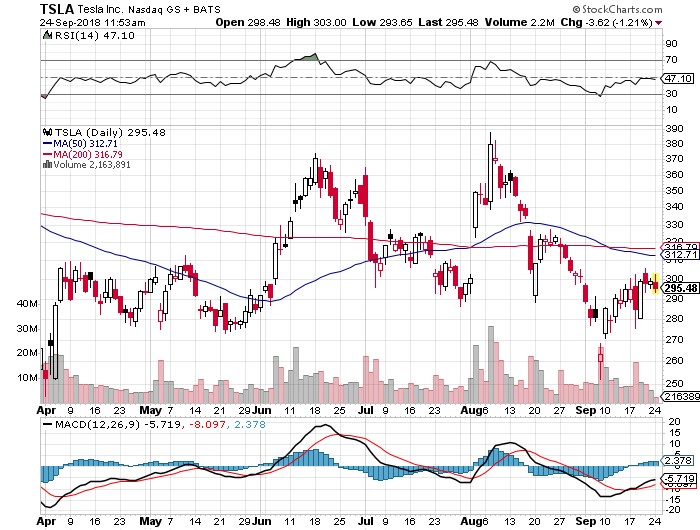Some Good News From Tesla
I’ll give you a chance to pick yourself off the floor first. While the media focus seems to be overwhelmingly on problems with the Tesla 3 (TSLA) production these days, the fact is that some of the company’s other business lines are growing like gangbusters.
Orders for the groundbreaking Tesla Powerwall were up an eye-popping 450% during the first half of 2018. This device costs $5,800 ($4,060 after the federal alternative investment tax credit) and can store enough power to run your house for three days. When integrated with your solar rooftop array the combined system allows you to reap a greater return from your alternative energy investment.
Tesla could sell more Powerwalls but is constrained by lithium-ion battery supplies from its Sparks, Nevada, Gigafactory. Doubling the world’s lithium-ion battery supply in one shot, Tesla is already shopping for a location for a second Gigafactory. As the company made ramping up Tesla 3 production to 100,000 units this year its top priority, the car has first called on battery supplies.
Tesla has also recently completed several utility-sized battery projects that have consumed lithium ion supplies, including those in Australia, Moss Landing, California, for PG&E, and for Green Mountain Energy in Vermont. This means that Tesla has already carved out a dominant position in a market that is expected to grow by tenfold over the next five years. GTM Research estimated that sales of energy storage products in the U.S. will soar from $541 million in 2018 to $1 billion in 2019 and $4.6 billion by 2013.
It is developing into a global market. The U.S. only accounts for 30% of the global battery storage market, with energy-poor Japan and South Korea holding major shares. Tesla competitors include Florida-based NextEra Energy in America, E.on in Germany, and Fluence, a joint venture between Siemens and AES, also from Germany. Germany seems to be the place where green energy philosophies and top-rate engineering meet.
It’s impossible to see how much the battery business is contributing to Tesla’s overall bottom line as it does not break out earnings separately. They are subsumed within a Tesla division that once comprised Solar City, which Tesla took over in 2016. Running two businesses off a single lithium-ion supply was a stroke of genius, permitting vertical integration and vast economies of scale.
However, Tesla’s solar business saw revenues rise by 56.7% to $784 million over the year-earlier period. Selling a product with exponential demand but limited supply is a good place to be in. It is puzzling to see so much media attention paid to a company with a market capitalization of only $50 billion. Last week, the controversial firm soaked up perhaps a quarter of all financial reporting coverage.
But when you add up all of the industries that Tesla is radically disrupting, such as autos, the oil industry, the dealer local network, local power utilities, and advertising, it comes close to 25% of U.S. GDP. If I had just taken the online payments system, auto, rocket, solar, and the battery industries a decade into the future and made $30 billion for myself along the way, I’d probably be smoking a joint, too. And Elon is only 47. It makes you wonder what you’ve been doing with all your free time.


The Diary of a Mad Hedge Fund Trader, published since 2008, has become the top performing trade mentoring and research service in the industry, averaging a 34.84% annual return for ...
more


